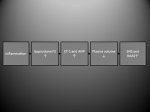adreno
PR activist
- Messages
- 4,841
Resveratrol inhibits isoprostanes, and improve cerebral blood flow:
Resveratrol inhibits isoprostane production in young and aged rat brain.
Effects of resveratrol on cerebral blood flow variables and cognitive performance in humans: a double-blind, placebo-controlled, crossover investigation.
Resveratrol inhibits isoprostane production in young and aged rat brain.
Effects of resveratrol on cerebral blood flow variables and cognitive performance in humans: a double-blind, placebo-controlled, crossover investigation.

